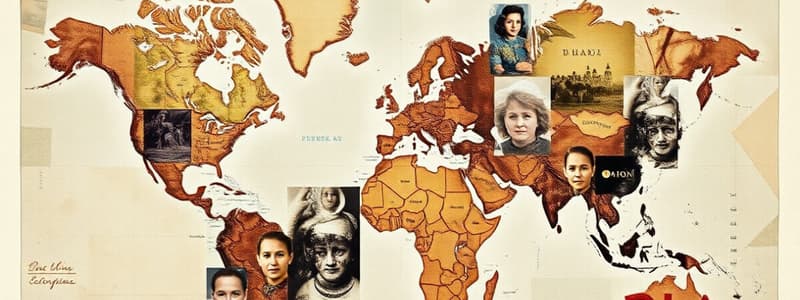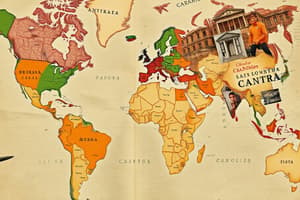Podcast
Questions and Answers
Which type of map would you use to show natural features like mountains and rivers?
Which type of map would you use to show natural features like mountains and rivers?
- Thematic Map
- Political Map
- Physical Map (correct)
- Topographical Map
Canada became its own country on July 1st, 1867.
Canada became its own country on July 1st, 1867.
True (A)
What is the tallest mountain in Canada?
What is the tallest mountain in Canada?
Mount Logan
The four initial provinces of Canada were __________, __________, __________, and __________.
The four initial provinces of Canada were __________, __________, __________, and __________.
Match the Canadian provinces with their capital cities:
Match the Canadian provinces with their capital cities:
Flashcards
Sense of Place
Sense of Place
A specific location's unique character, determined by its natural and human features.
Why There?
Why There?
Explains the reasons behind the location of things, including natural factors like climate and landforms, and human actions like building cities.
Political Map
Political Map
Shows political boundaries like countries and provinces.
Physical Map
Physical Map
Signup and view all the flashcards
Canada's Founding Date and Provinces
Canada's Founding Date and Provinces
Signup and view all the flashcards
Study Notes
Geography Exam Review - Unit 1
- What is Geography?
- Geography impacts all aspects of life
- Define "Sense of Place"
- A location's unique characteristics
- Know the 3 Geographic Questions:
- What is Where? Absolute (precise coordinates) and relative (position to other places) location
- Why There? Reasons for a location's features (natural and human factors).
- Why Care? Economic and environmental concerns.
- Types of Maps
- General Purpose: Show political and physical details
- Topographical: Displays elevation changes using lines
- Thematic: Highlighting specific data or themes (e.g., population density)
- Physical: Depicts natural features (mountains, rivers)
- Political: Shows boundaries between countries
Compass Directions
- Compass directions are crucial for navigation on a map.
- N, NE, E, SE, S, SW, W, NW are shown for orientation.
Creating a Road Map Legend
- A legend summarizes map symbols and their meanings in a clear and concise format.
- Legends usually clarify elements on a map.
Canada
- Canada's Formation: July 1st, 1867.
- Initial Provinces: Ontario, Quebec, Nova Scotia, and New Brunswick
- Provinces and Territories with Capitals: List of provinces and their capital cities is presented in the text.
- Tallest Mountain: Mount Logan. Location: Yukon Territory.
Studying That Suits You
Use AI to generate personalized quizzes and flashcards to suit your learning preferences.




